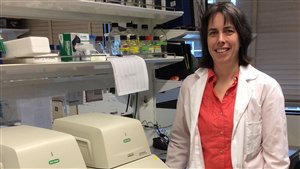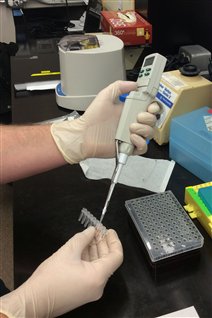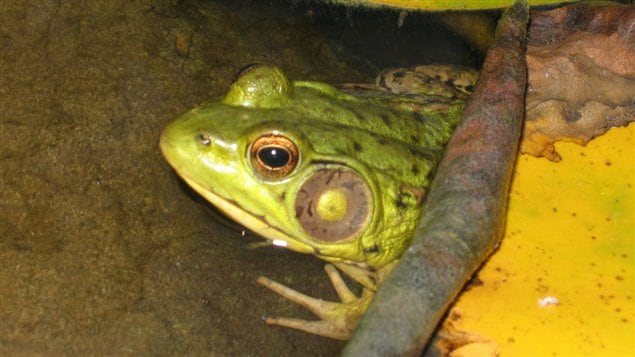Scientists in west coast British Columbia are studying the genome of the bullfrog to get a better understanding of how chemicals in the environment may affect humans.
Caren Helbing PhD, is professor of bio-chemistry in the Department of Bio-Chemistry and Micro-biology at the University of Victoria, on Vancouver Island, on Canada’s west coast.
ListenSurprisingly, the frog genome is about twice as long as the human genome, andby mapping the frog genome scientists hope to discover things about human genetics.

The frog is a unique animal according to Dr Helbing. It begins life in an aquatic situation and then moves to land. It’s skin is porous in that the animal can breathe and absorb water through it. As such it can be very easily affected by chemicals in both the water, air, and land that pass readily into its body. Such chemicals may have an effect on DNA, and hormone production, which may be similar to a potential effect on humans.
By mapping the frog genome and establishing a baseline DNA reference, scientists will be than able to determine the genetic effects of various chemicals in our environment.
Dr Helbing notes that the frog goes through a transformation from aquatic tadpole to air breathing frog, very much like human babies.
In fact she says, similar hormones are at play in both cases.

Professor Helbing notes that work with frogs has already shown that a common anti-microbial used in many products can have a negative effect on thyroid hormone function that has led to similar findings in animals.
Used since 1972 Triclosan is present in many personal care consumer products such as soaps, shampoos, deodorants, toothpastes, mouth washes, and cleaning supplies. It also incorporated into an increasing number of other household products such as kitchen utensils, toys, bedding, socks, and trash bags. It is also found in health care settings in surgical scrubs and hand washes. Triclosan has now been flagged for a safety review by Health Canada and the US FDA.
Professor Helbing says that thanks to advances in technology, even though the frog genome is so much larger than the human genome, they hope to have the genome mapped in a year and half. A decade ago it had taken thirteen years to map the human genome.
Funding for the research comes from Genome BC, the Michael Smith Genome Sciences Centre, and the Natural Sciences and Engineering Research Council of Canada (NSERC), with additional help coming from Compute Canada.







For reasons beyond our control, and for an undetermined period of time, our comment section is now closed. However, our social networks remain open to your contributions.